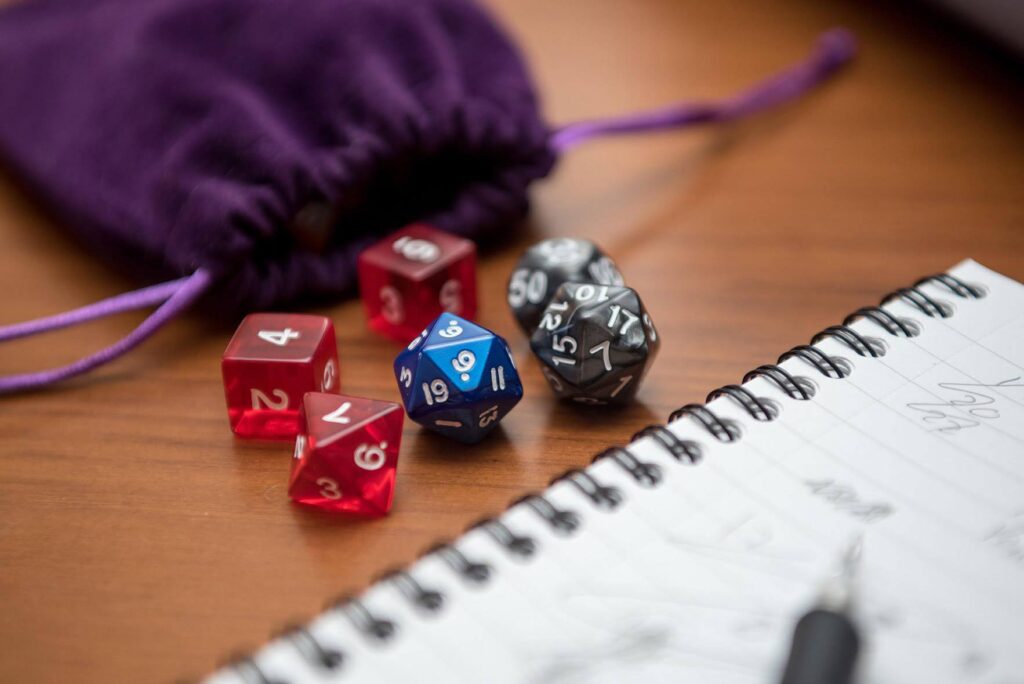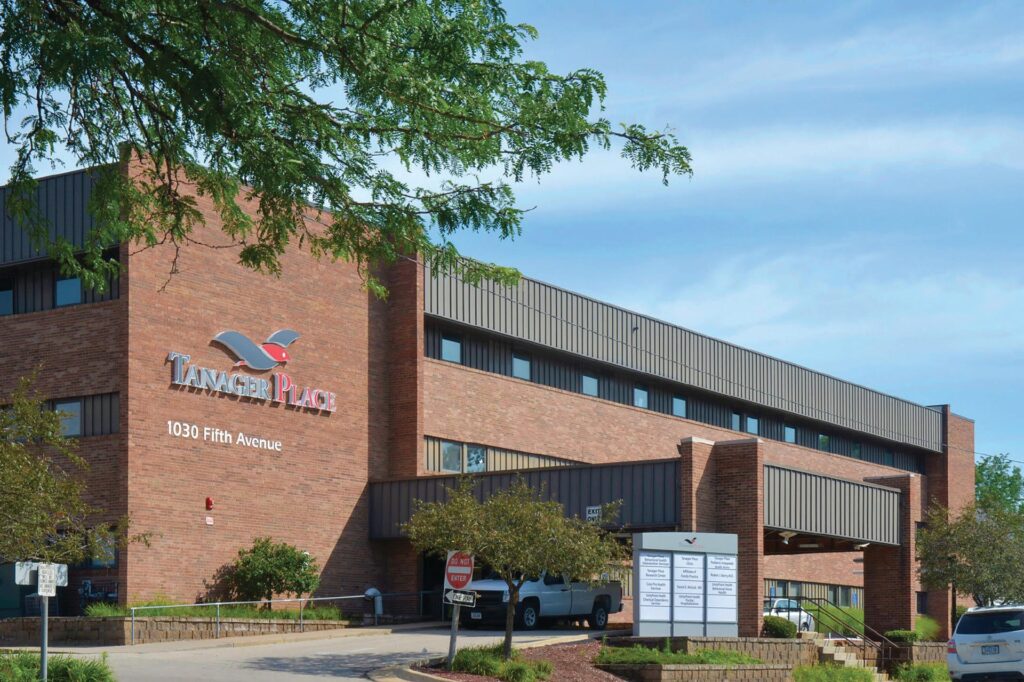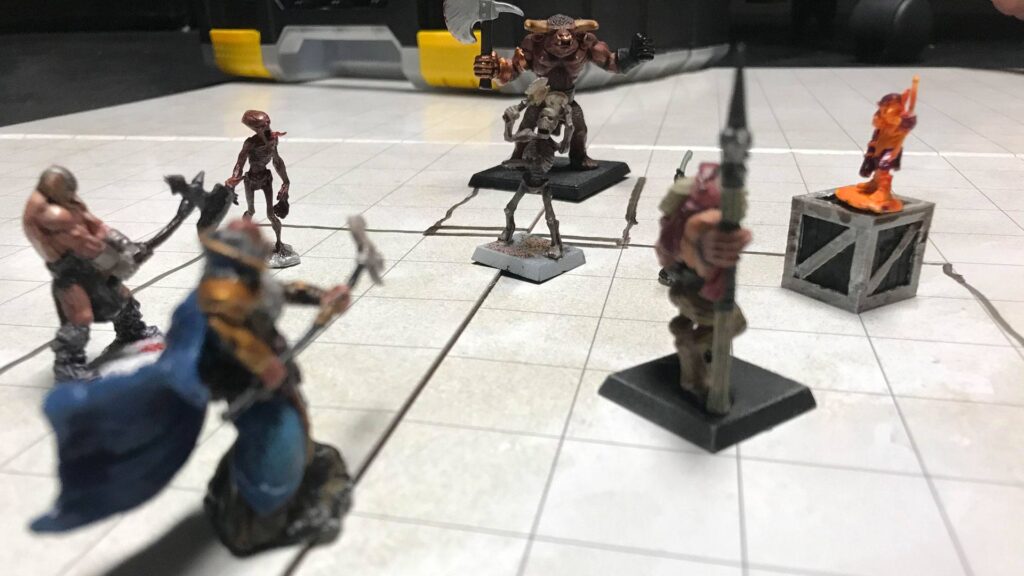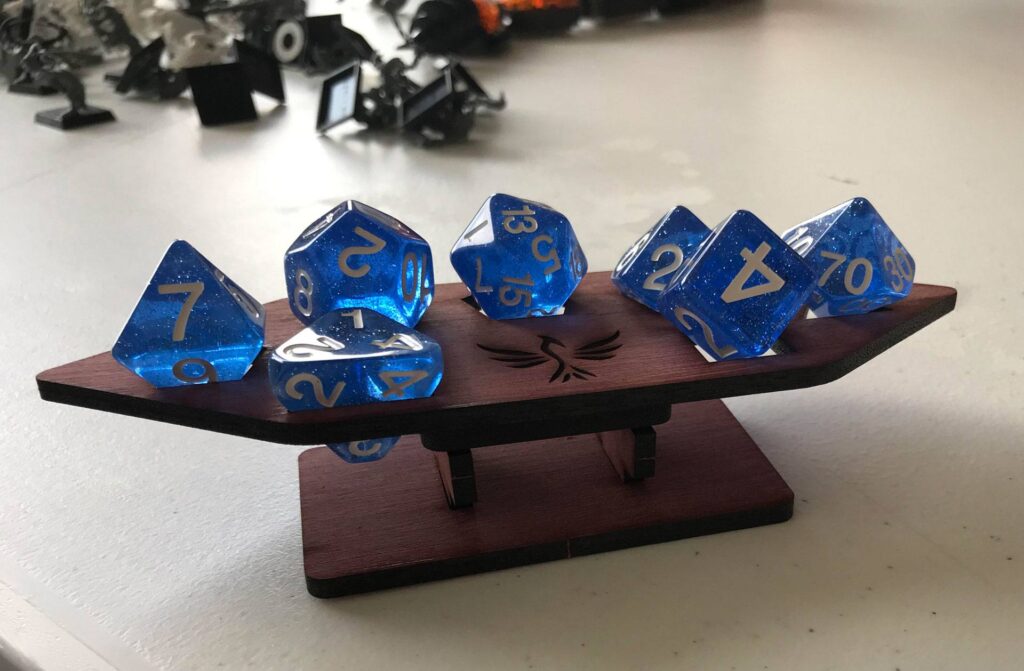Jordan Pinckney, BA, BHIS Caseworker I

How can we inspire kids who wandered into the digital world, molded their identities to the realm of technology, and now hide behind an avatar for the pleasures of their followers and online friends? How do we reach these disguised youth, who find more life in their created identities than in their own?
Sitting in a room two years ago, three Behavioral Health Intervention Services (BHIS) Caseworkers believed they found a viable solution to these challenges in their own shared experiences. John-Paul, Darren, and Jordan discovered similarities in how the creative realm of Dungeons & Dragons (D&D) played a significant role in their own abilities to overcome teenage obstacles. If a table-top role-playing game could help them, they reasoned, why couldn’t it also be a tool to help other teens, especially those they knew professionally who were already dealing with mental health challenges?

Darren was finishing graduate school and preparing for a career as a school-based therapist. John-Paul, was in the midst of a master’s program to become a licensed therapist, and was already using D&D as the main focus of his graduate research: “Can Using Role-Playing Games as Interactive Therapy Decrease Anxiety with Clients with Social Anxiety?” (He received a perfect score.) Jordan, had a decade of experience working with youth in the mental health field and a passion for creativity and role-playing
games (RPG).

The trio spent months researching their theory and submitted a proposal to Tanager Place, a children’s mental health provider and their current employer. Although a pilot program for youth in an inpatient treatment program featuring a therapeutic adaptation of Dungeons & Dragons was originally slated to begin in May 2020, the pandemic and subsequent lockdown meant the intervention was needed earlier. The new tool was offered instead, in March, providing a welcome escape for teenagers facing weeks in restrictive isolation. The adventure had begun.
Used as a Social Skills Program tool, the adaptation for kids ages 12 to 18, specifically targeted mental challenges such as depression, social anxiety, autism, bipolar disorder, ADHD and other cognitive issues. With social distancing mandates in place, the sessions at Tanager Place occurred in inpatient facilities that allow for gaming space as well as any needed additional professional support.
Jordan and John-Paul established channels of communication with supervisors and other staff members in order to ease transition of youth into and out of the program, which is currently set as a 4-week course with 2-hour sessions held twice each week. The participating youth were transitioned out of the program following each course to allow more kids to experience the program, broadening behavioral health data. While the first course had volunteer youth participants, the success was so great that a wait list had to be created of kids wanting to get involved.

Because no direct funding was available to support the program, Jordan and John-Paul volunteered their personal time to facilitate the sessions, as well as reach out to businesses and individuals engaged in the worldwide gaming community. Within hours of posting an online request for donations, people throughout the globe, despite ongoing pandemic concerns, wanted to help. For Jordan, John-Paul and the youth at Tanager Place the donations and support were inspirational and miraculous. Packages from Australia, Taiwan, Germany, China, Denmark, Sweden, the UK, Canada and nearly half of the United States arrived in Iowa to support the resiliency and wellness of local youth. The out-pouring of love and generosity was beautiful and humbling.
Because of these selfless donations, vulnerable teens had everything they needed to begin a new adventure with purpose – dice, pouches, character sheets, figurines, swag and so much more.
Also arriving in Iowa were paints and brushes, which allowed Jordan and John-Paul to incorporate expressive arts into the program. Teens painted their own figurines as well as figures for future adventurers. By placing their initials on the figure bases, participating teens had already left a mark on the program.

One vital rule to the effectiveness of the program was “no technology allowed”, circumventing the possibility of digital distractions. The teens could completely immerse themselves in the RPG quests, their character’s identity and their necessary dependence on their adventuring team. Disconnecting from the outside world also allowed the teens to escape personal pressures and obstacles, if only for a short time.
Behavioral-response data was gathered and documented with paper and pencil by Jordan, who observed and supported each session. The documentation tracked the participants’ emotional response to game-generated conflicts. As “Master of Stories,” John-Paul weaved the imaginary tale through introduction of predetermined metaphorical conflicts. Navigating through maze-like puzzles, manipulative non-playable characters or unpredictable traps, the teens learned to work through each guided scenario as a team. This also served as role-models of evidence based social skills and allowed test-driving of new predictability-thinking skills. The youth attempted, with various levels of success, social skill interactions necessary to progress the game. The game, unlike some real-life situations, provided an opportunity to take a chance and try again.
Several factors contributed to the development of this two-staff member gameplay model, and it holds several advantages for gameplay and learning. The observer becomes an external role model, while the Master of Stories is an in-game guide and support.
Teens received consistent praise and direction as the identity of their character – whether it be a Woodland Elf, Warlock, Dragonborn, Ranger, Tiefling, or Barbarian – broadened in detail. As they spent more time in sessions, John-Paul and Jordan recognized the emergence of a ‘bleed’ effect, where the teens’ personal lives would ‘bleed’ into the role-playing game through their characters. As this happened, the team would re-form into something stronger – a bond.
Jordan and John-Paul have so far collected about 12 weeks of program data, a combination of pre/post social skills surveys, behavioral response observations, and behavioral trackers during their time in inpatient. Using this data, the two hope to have enough evidence to show that role-playing games such as Dungeons & Dragons can have a proven, positive impact on teens’ social skills, social well-being, and social confidence. This information also supplements the program manual, peppering it with equal doses of profession and passion.

Initiatives similar to the one John-Paul, Jordan, and Darren launched in Iowa exist in other places. But there is something different and unique about this Social Skills Program, something that sets it apart from the others. Their employer, Tanager Place, who agreed to pilot the program has served children and families for 141 years. It has stood the test of time by continually injecting inspiration, healing, and empowerment to those it serves. With this as a foundation, the therapeutic RPG becomes one more wall of protection and support for the children of Tanager Place. And, as any gamer who has stood before a mighty foe knows, there’s strength in numbers and friends are key to success.
Hopefully, as Tanager Place continues to live on and change the world, so will the world of fantasy go on to change the hearts and minds of its adventurers.
About the Author
Jordan Pinckney is a Behavioral Health Intervention Services Caseworker who lives in Cedar Rapids, Iowa with his wife and two kids. In addition to working at Tanager Place for the last 11 years, Jordan is an author who feels blessed to experience the world as an adventure full of quests. In his spare time, you may find Jordan lifting at the gym, or reading comic books in his mancave. Service to people through love and creativity keeps Jordan motivated and happy.

